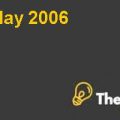Smartphone Industry in 2013: Samsung's Dilemma Case Study Solution
The strengths and weaknesses of Samsung, starting from the 2013 smartphone global market analysis are listed below:
Strengths
- Samsung has worldwide operations around the world that provides it with greater benefits, economies of scale, improved profit margins and recognition around the world.
- Its geographical reach has been further strengthened by its partnerships, with the leading global player such as Intel, EMC, Microsoft, IBM and Sony etc.
- The comprehensive product portfolio is strength of the company, as the company offers products through its eight different businesses.
- Samsung’s market share is huge within the smart phones industry and it has captured the market share of Nokia, with its superior innovation and technology development.
- In 2013, Samsung sold the highest number of the smart phones, with just over 31% market share.
Weaknesses
- Samsung relied on Google to develop a new version of the OS, in order to take advantage of its innovative hardware.
- Samsung is a hardware leader and it depends on its competitors for software.
- Samsung had faced a number of legal proceedings against apple,due to their patent battles.
- The main competitors of the company such as Microsoft and Google, are also one of the main buyers of the company.So the company depends on them to generate revenues.
Part 2: Relevant Alternatives to Evaluate
Before describing the most relevant alternatives to evaluate, we perform a detailed industry and environmental analysis using different frameworks.
Five Forces Analysis
- Supplier Power: The supplier power is low, as most of the suppliers of Samsung offer discounts and most of the components are widely available.
- Buyer Power:The buyer power in the smart phone industry is moderate, since buyers have a wide array of products to choose from and at the same time, they stick to one brand as the products are of high value.
- Threat of Substitutes: This threat is high within this industry, as the industry is flooded with substitutes. In addition, since smart phones are those durables that are long-term purchases, so companies like Samsung have to be careful in deciding their marketing strategies.
- Threat of New Entrants: The number of entrants in the smart phone industry is likely to increase, despite high barriers to entry and low barriers to exit. Moreover, it is difficult for new entrants to enter into the emerging markets, as setting distribution channels and supply chain is difficult in these markets so this threat is high.
- Competitive Rivalry: Competitive Rivalry is significant for Samsung within the market, as the competition is intense and profit margins are tight. In addition, Samsung faced the equivalent of the Cola wars in its emerging markets like India.Where it has to compete with many global and local players.
PEST Analysis
- Political: A number of political parties, international pressure groups and home market lobbying groups,affect the growth of Samsung indirectly and directly. Government is also one of the largest buyers of Samsung’s products.
- Economic: Consumers are becoming selective about spending their disposable income. Declining revenue and strong margins are hurting industry profits. However, the demand is likely to increase, as economy recovers and from downstream industries.
- Social& Cultural: Human right issues regarding low wages, are becoming more prominent in the industry. The consumer spending is reflected by the business spending and capital investment of industry products. Lastly, advanced technology is becoming part of a culture today.
- Technological: Smart phone industry is characterized by constant technological advancements. Wireless equipment manufacturers are constantly investing in their suppliers and devices that have high-speed networks are the focus of R&D.
Value Chain Model
In term of value chain, the primary activities of the company are expanding and most suppliers of the company are based in Asia. The business is highly diversified with global operations around the world. In terms of outbound logistics, Samsung has been quick to launch its products in comparison to its competitors. The total marketing budget of Samsung has been around $363 m in 2013.Therefore, it strives to deliver high service to its customers through regular feedback and support.
Regarding the support activities, Samsung is creating and developing new infrastructure for technology development. In terms of Human resource, the workforce of the company is the strongest asset of the company with talented engineers and researchers. The company has built supplier relationships, by investing in them to procure its materials. It is the leading technology developer recognized around the world today.
Most Relevant Alternatives
Based on the above environmental and industry analysis, some of the alternatives for Samsung to sustain its competitive advantage are as follows:
- Samsung should drop Android and invest to develop its own OS.
- Samsung can develop its app store like Amazon and offer services that would replace Google’s.
- Another alternative is to adopt the Blackberry or Microsoft OS as an alternative.
- The last alternative is to develop a cheaper smart phone, by keeping all the deemed features intact..................
This is just a sample partial work. Please place the order on the website to get your own originally done case solution.











